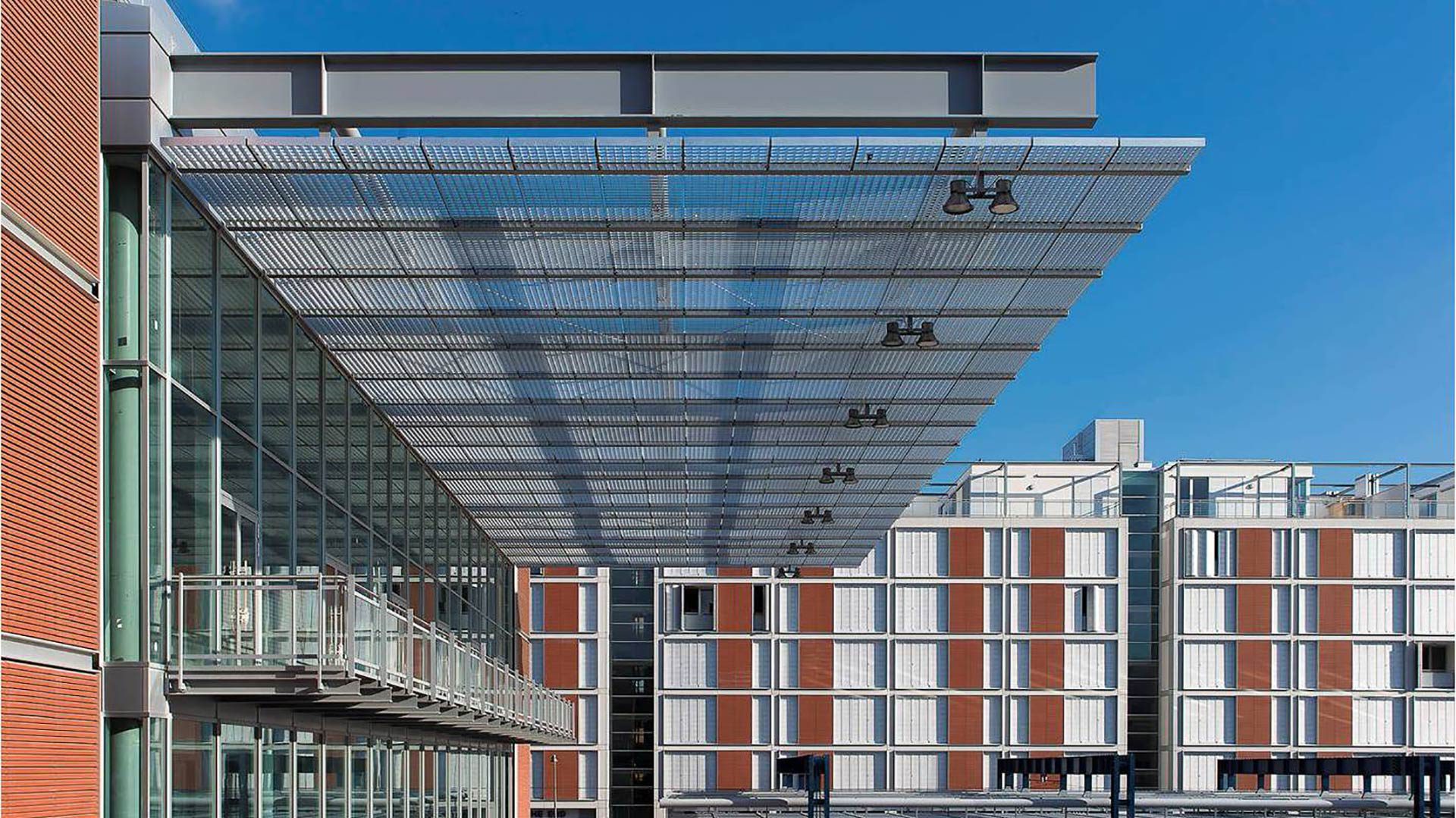
New Civic Center of Scandicci – Florence – IT
PORTFOLIO
Location Scandicci (FI)
Year 2012
Designer Rogers Stik Harbour + Partners
Client Focchi Group
The New Civic Centre in Scandicci (Florence) engineered by Rogers Stik Harbour + Partners has been awarded a prize by the Royal Institute of British Architects as the best european project for the year 2014.
The definition of a new urban plan open and functional to the needs of the community was the key for the development of a spaceless urban area and a sprawl city. A series of buildings and a new tram line – connecting the town to the centre of Florence – have been built around a public piazza, focusing a series of activities from public to private, for the whole community. The new development at Scandicci is characterised by buildings that respect the scale of their surroundings and create a contemporary architectural language, that gives cohesion between all the diff erent typologies, whilst responding to their individual functions. The result is a restrained architectural aesthetic that directs attention towards the setting rather than the buildings themselves. The choice of materials has been conceived with care and attention to the details, the natural anodized aluminium, concrete, glass, stainless steel and terracotta, all cladding crosswise the buildings.
Commercial activities and bars are located on the groundfloors facing the square, which is, in turn, crossed by thetram and partially occupied by the new station. The square, a redesigned, entirely pedestrian space with seating and fountains, was transformed from an anonymous terrain vague into a public space shared by the existing municipality and new buildings along with the many tram users.
The new residential building, parallel to the tramlines, closesthe square on the east side facing the municipal building inthe most protected area of the project at the center of thepedestrian area. The linear building has commercial spaceson the ground floor and 88 dwellings of various sizesdistributed on 5 typical floor levels and a penthouse. Full-height glazing envelops the ground floor set back from themain volume which appears suspended above the tramlines. Three fully glazed stairs, also set back, are carved outof the main façade dividing the building into four volumes, two on the ends and two central ones. Different façade treatments distinguish the rear elevation from the main one simple extruded aluminium panels and fiber cement on the rear and an elegant curtain wall in terracotta suspended from an aluminium substructure on the main elevation.
The red tone of the terracotta, framed by natural anodized aluminium and inset within visibly expressed concrete frame, creates a language that places the traditional local materials in a new, fresh setting. The mix of buildings that have been designed as part of the project include a cultural centre, a commercial building and residences. The cultural centre frames the eastern edge of the piazza and provides a multi-functional hall for seminars, conferences, exhibitions and concerts. It is designed for and operated by the local council and off ers completely fl exible spaces inside, allowing for future adaptation. It can work both independently or in tandem with the piazza outside to stimulate ideas about public activity.
TECNIQUE:
The choice of terracotta for the ventilated façades and sunscreens made by Palagio Engineering underlines the attention to sustainable construction and to energy saving besides the historical roots that Terracotta has always have in Tuscany. The terracotta tiles and sunscreens model TerraArch are installed through the aluminum fixing system XL engineered by the compan; they clad the entire surface of the bulding for 1340 sqm.
The panels and sun screens required the design of an extruded form adaptable to the different typological features and inter-floor heights of the three buildings, with the following dimensions: the Cultural Centre, 3.27 meters, 3.52 meters and 3.77 meters; the Office Building, 3.54 meters; the Residential Building, 2.79 meters. The basi c module, which functions as a common denominator for ali types of panels, consists of four louvers 24.80 centimeters high.
The requisite tolerances, ranging from a minimum of 2 inches to a maximum of 9 centimeters, are absorbed by the joints between the modules and the upper and lower fixtures of the panels to the floor slabs. In particular, each building adopts the following type of composition: The towers of the Cultural Centre have framed panels with ventilated cavities and are faced continuously with terracotta. Level with the mezzanine floor slabs, the fronts are lined with GRC sheets and extruded aluminium profiles (21 centimeters high) that frame four panels 96.2 centimeters wide and 2.50 meters high. The Office Building uses three types of terracotta cladding systems that vary depending on the solar exposition. Apart from the north-east façade, which is fully glazed, the remaining fronts have infill panels with shielding that depends on their function and orientation. The north-west and south-east fronts have a glazed part on the inside (floor-toceiling or just in the middle band) and three external bands in terracotta that shield the interiors from the sun in different ways: the upper and lower bands consist of a masonry system and ventilated terracotta cladding; the central band (approximately 1.52 meters high) consists of windows that open and are screened by terracotta baguette shades. Like the northeast front, the southwest front, lined with a tripartite arrangement has a similar continuous cladding of glass with steel bracing, but is shielded by terracotta baguette shades from floor to ceiling (3.00 meters high). The Residential Building is characterized by the double module of terracotta panels mounted on aluminium frames and combined with the module (l meter wide) of aluminium panels with horizontal louvers that make up the single-leaf folding screen system on the loggias, protected by balconies with glass parapets and steel uprights.
